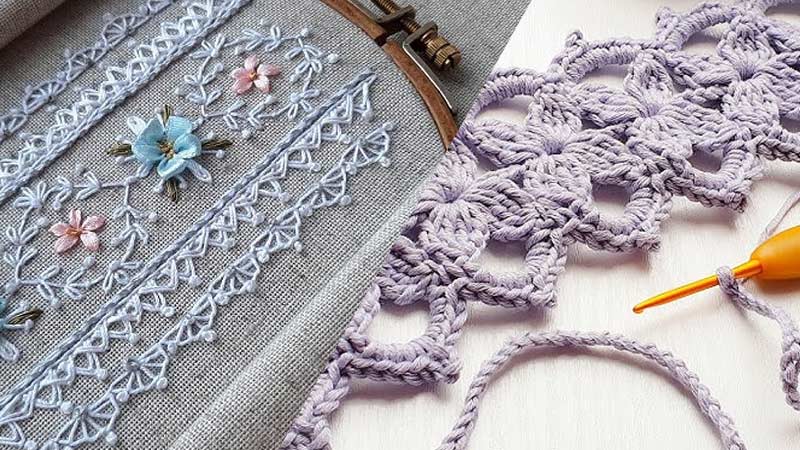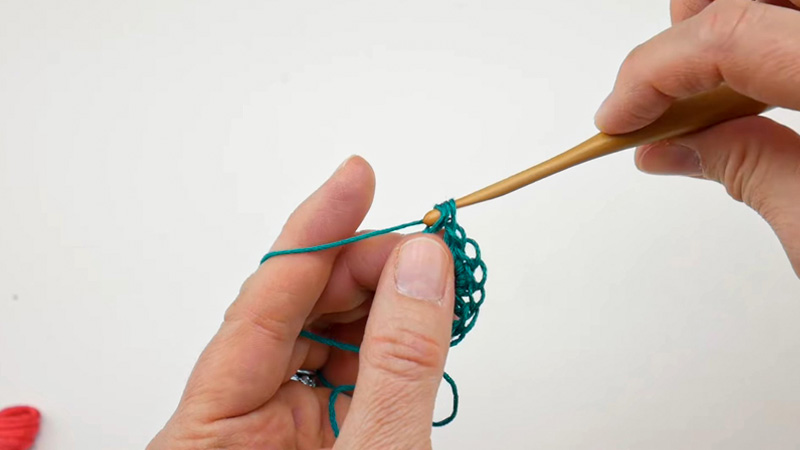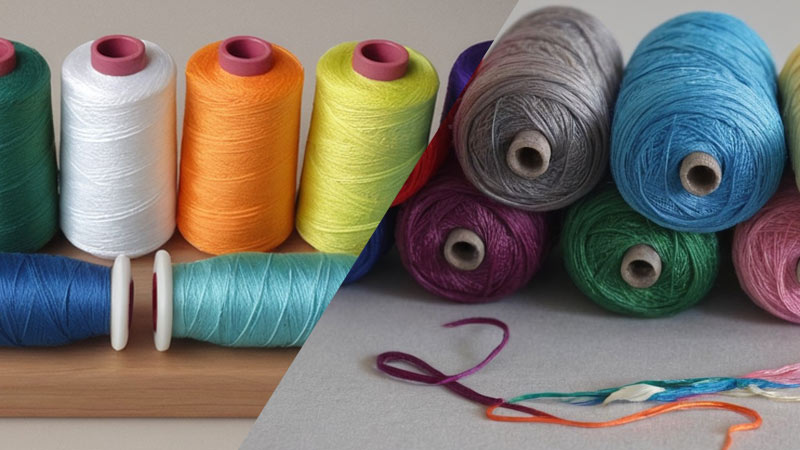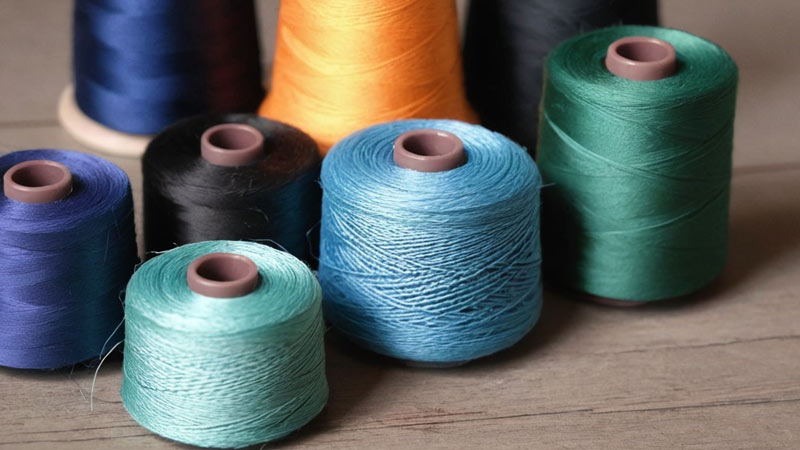Embroidery thread and crochet thread, though both integral to the world of needlework, serve distinct purposes.
While the uninitiated might assume they are interchangeable, seasoned crafters recognize the nuanced differences between these specialized threads.
Embroidery thread, designed for hand and machine embroidery, boasts a versatile composition and vibrant colors suitable for intricate stitching.
On the other hand, crochet thread, characterized by its fine texture and diverse material options, caters to the art of crocheting delicate and detailed items like doilies, garments, and accessories.
This exploration delves into the unique qualities of each thread, demystifying the notion that embroidery thread and crochet thread are the same.

Is Embroidery Thread the Same as Crochet Thread?
No, embroidery thread is not the same as crochet thread. They differ in their composition, texture, and usage.
Crochet thread is designed explicitly for crochet projects and is typically twisted differently than embroidery thread. It tends to be stiffer, providing the necessary structure for crochet stitches.
Additionally, crochet thread comes in various weights, and lighter weights, such as size 40, are generally preferred for intricate crochet work.
On the other hand, embroidery thread is designed for hand or machine embroidery. It is usually made of multiple strands that can be separated to achieve different thicknesses.
Embroidery thread is softer and more pliable than crochet thread, allowing for flexibility in stitching and intricate embroidery designs.
While both threads serve different crafting purposes, it’s crucial to choose the right thread based on the project’s specific requirements, considering factors like texture, weight, and intended use.
Can You Crochet With Embroidery Thread? Some Key Points
Yes, it is possible to crochet with embroidery thread, and doing so can open up a world of possibilities for creating delicate and intricate projects.
Crocheting with embroidery thread offers unique challenges and advantages compared to traditional crochet yarn.
Here are some key points to consider:
Fine Detailing

The finer nature of embroidery thread allows crocheters to achieve extraordinary project details.
This is particularly advantageous for creating intricate lacework, delicate doilies, and smaller items where precision is critical.
The fine texture of embroidery thread enhances the ability to showcase complex stitch patterns, resulting in finished pieces that exude elegance and craftsmanship.
Varied Color Options
The extensive color palette of embroidery thread opens up a world of creative possibilities. With its vibrant and lustrous finish, embroidery thread allows for stunning colorwork in crochet projects.
Crafters can experiment with different color combinations, gradients, and shading, adding artistic expression to their work that may not be as easily achieved with thicker yarns.
Thinner Hooks
Using embroidery thread necessitates working with thinner crochet hooks to match the delicate texture of the thread. This adjustment in tool size requires a level of skill and control.
Crocheters may need to refine their technique and tension, adapting to the demands of the smaller hooks. This change in approach adds a layer of skill development to the crocheting process.
Patience and Precision
Crocheting with embroidery thread demands patience and precision due to its delicate nature. The fine thread requires careful handling to avoid tangling or splitting.
However, the meticulous effort invested in each stitch creates refined and detailed finished pieces. This attention to detail is part of the charm and satisfaction of working with embroidery thread.
Versatility in Projects
The use of embroidery thread in crochet expands the range of projects that can be undertaken. Beyond traditional yarn applications, crafters can create jewelry, accessories, miniature items, and embellishments with this fine thread.
Its versatility allows experimentation with different project types, making it a valuable addition to a crafter’s toolkit for various creative endeavors.
Experimentation with Stitch Patterns
The fine texture of embroidery thread provides an excellent canvas for experimenting with a myriad of crochet stitch patterns.
Crocheters can explore textured stitches, lace patterns, and intricate designs, allowing for a higher level of creativity and customization in their projects.
This experimentation not only enhances the visual appeal of the finished piece but also provides a satisfying and engaging crafting experience.
Crochet Thread vs Embroidery Floss

Crochet thread and embroidery floss are both famous materials used in the realm of needlework and fiber arts. Still, they serve different purposes and are distinct in texture, thickness, and applications.
Here are the differences between Crochet Thread and Embroidery Floss:
Fiber Composition
- Embroidery Thread: This thread is carefully crafted from cotton, rayon, or polyester. The chosen fibers contribute to the smooth and lustrous finish of embroidery thread, enhancing the visual appeal of embroidered designs.
The goal is to create a thread that glides effortlessly through the fabric while maintaining a consistent and vibrant appearance. - Crochet Thread: Crochet thread, on the other hand, is also commonly made from cotton but is intentionally thicker and stiffer.
This characteristic is crucial for crochet projects where maintaining the structural integrity of the final piece is essential. The stiffer nature of crochet thread supports intricate stitches and helps define the shape of the finished product.
Twisting and Ply
- Embroidery Thread: This thread is tightly twisted and often comes in multiple plies to facilitate smooth stitching and embroidery.
The tight twist ensures the thread has a sleek surface, allowing it to pass through the fabric with minimal friction. Additionally, the numerous plies make it easy to separate strands for various embroidery techniques, providing flexibility in design. - Crochet Thread: Crochet thread typically has a different twist and may be less tightly plied than embroidery thread. This unique twisting is tailored to meet the specific demands of crochet work, balancing stiffness for structure with enough flexibility for intricate stitches.
The construction of crochet thread is adapted to the needs of crocheters who employ diverse techniques in their projects.
Weight and Thickness
- Embroidery Thread: Available in a spectrum of weights, embroidery thread is generally finer and more delicate. The weight of the thread is often indicated by numerical values, with lower numbers denoting thicker threads.
This diversity in weight allows embroiderers to choose the most suitable thread for different fabrics and design elements. - Crochet Thread: Crochet thread, classified by weight as well, is characteristically thicker than embroidery thread. Higher numerical values for crochet threads indicate finer threads, with size 10 being thicker than size 40. The weight of crochet thread is crucial in achieving the desired drape and texture in crochet projects.
Ideal Uses
- Embroidery Thread: Primarily designed for delicate and detailed embroidery work on fabric, embroidery thread adds intricate designs to clothing, linens, and various textiles. Its fine texture allows for precise detailing and embroidery on a smaller scale.
- Crochet Thread: Tailored for the art of crochet, this thread is the preferred choice for creating doilies, lace, and other intricate patterns. Its thicker and stiffer nature is particularly advantageous for maintaining the shape and structure of crochet projects, ensuring that the final piece meets the expectations of the crocheter.
Color Variety
- Embroidery Thread: Manufacturers offer a wide array of colors for embroidery thread, often with a shiny finish. The emphasis on color variety allows embroiderers to choose threads that complement their designs and add a touch of brilliance to the finished embroidery.
- Crochet Thread: Crochet thread comes in diverse colors, though the thread’s texture and structure may be more emphasized than its sheen.
The color options cater to the aesthetic preferences of crocheters, allowing them to express their creativity in the intricate details of their projects.
What Is Crochet Thread Used For? Common Uses

Crochet thread is a specialized type of yarn thinner and smoother than traditional yarn, making it well-suited for various delicate and intricate projects.
It is primarily used for crocheting, a craft that involves creating fabric by interlocking loops of yarn with a crochet hook.
Here are some common uses for crochet thread:
Doilies and Tablecloths
Crochet thread is a favored choice for crafting doilies and tablecloths, adding an elegant touch to home decor. The fine texture of crochet thread allows artisans to create intricate stitch patterns and delicate designs.
Doilies, often placed under decorative items or as standalone pieces, showcase the beauty of crochet thread with their detailed and lacy appearance.
Tablecloths made with crochet thread bring a timeless and handmade charm to dining spaces, making them perfect for special occasions.
Lace and Edgings
Utilizing crochet thread for lacework and decorative edgings enhances the visual appeal of various fabric items.
Crochet thread must be added to clothing, linens, or other textiles to create beautiful embellishments.
Lace collars, cuffs, and hemlines showcase the versatility of crochet thread, bringing a touch of sophistication and intricacy to garments.
Fashion Accessories
Crochet thread shines in fashion accessories, contributing to the creation of lightweight and stylish items.
Earrings, bracelets, and necklaces made with crochet thread exhibit a delicate and elegant aesthetic. The fine texture allows for the crafting of intricate patterns, resulting in accessories that complement a range of outfits, from casual to formal.
Thread Crochet Garments
Crafters adept with crochet thread often fashion entire garments, focusing on lacy or openwork designs.
Shawls, vests, and lightweight sweaters made from crochet thread offer a delicate and feminine appearance.
The breathability of the thread makes these garments suitable for various seasons, adding a touch of handmade artistry to wardrobes.
Home Decor Items
Crochet thread finds its way into various home decor items, such as curtains, bedspreads, and decorative pillows.
The intricate patterns achievable with crochet thread contribute to a handmade charm that elevates the ambiance of interior spaces.
These crafted items add a personal touch and showcase the versatility of crochet thread in home decoration.
Amigurumi and Small Toys
While the traditional yarn is ordinary in amigurumi projects, crochet thread is admirable for crafting smaller, more detailed toys.
The fine thread allows for precise stitch definition in these miniature projects, resulting in adorable and intricately designed stuffed toys.
The lightweight crochet thread makes these creations visually appealing and comfortable for play or display.
Jewelry
Crafters employ crochet thread to fashion delicate jewelry, including necklaces, bracelets, and rings.
The lightweight nature of the thread ensures comfortable wear, while the intricate patterns add a unique and eye-catching quality to the jewelry pieces.
Crochet thread jewelry allows for a personalized and handmade touch, perfect for those seeking distinctive accessories.
Thread Crochet Appliqué
Crochet thread is a versatile choice for creating appliqué designs, small decorative elements that can be attached to clothing, bags, or other fabric items.
These appliqués add a personalized and handmade touch, transforming everyday items into unique and artistic creations.
The fine thread allows for intricate detailing, making crochet thread appliqués a popular choice for embellishing various textiles.
FAQs
Are embroidery thread and crochet thread the same thing?
No, embroidery thread and crochet thread are not the same. They are distinct types of threads designed for different crafting purposes.
Can I use embroidery thread for crocheting?
Yes, it is possible to crochet with embroidery thread. Crocheting with embroidery thread allows for creating delicate and detailed projects, such as lacework, doilies, and accessories.
What is the main difference between embroidery thread and crochet thread?
The main difference lies in their intended use and texture. Embroidery thread is designed for embroidery work, offering a versatile composition and vibrant colors.
What types of projects are best suited for crochet thread?
Crochet thread is well-suited for projects that require fine detailing and intricate patterns.
Typical uses include crafting doilies, tablecloths, lacework, fashion accessories like earrings and necklaces, as well as delicate garments such as shawls and vests.
To Recap
While embroidery and crochet threads contribute to the rich tapestry of needlework, they distinctly fulfill specialized roles in crafting.
With its diverse colors and versatile composition, Embroidery Thread excels in intricate stitching for hand and machine embroidery projects.
Conversely, crochet thread, celebrated for its fine texture and varied materials, is the preferred medium for creating delicate crocheted items like doilies, garments, and accessories.
Recognizing the unique attributes of each thread is crucial for artisans seeking to bring their creative visions to life.
In unraveling the differences between embroidery thread and crochet thread, one discovers the inherent beauty and artistry, enhancing the depth and diversity of the crafting experience.
Leave a Reply